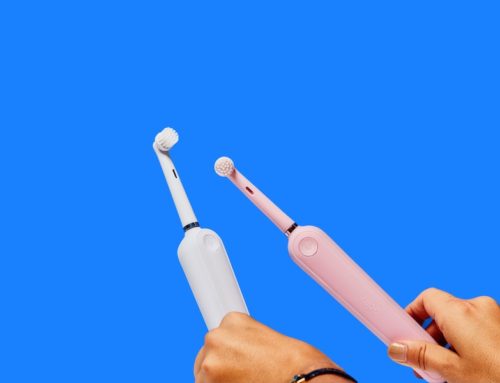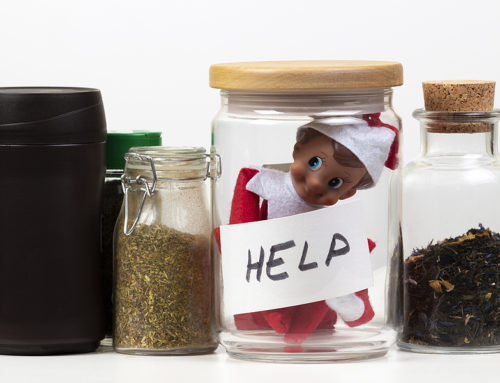The worst Christmas candy for your kids’ teeth
Each Christmas, Americans spend more than $400 million on chocolate and 3 in 4 parents put candy in their kids’ stockings. At this point, eating candy before breakfast is basically a Christmas tradition – but it can mean trouble for our kids’ oral health.
We’ve gone over ways to keep our own teeth healthy and white this year, but how do we help our children do so? By being selective in the types of Christmas candy we buy.
I’ve said before that I’m a dentist, not the Grinch, and the sentiment stands. As a parent to two young boys, I know how waking up to a candy-less stocking would go over (not well).
So, instead of telling you to forego Christmas candy altogether this year, I’ll just recommend a few to consider avoiding.
Caramels
Sticky candies like caramels and toffees should really come with a warning label. Why? Because the components of their texture – thick, chewy, and sticky – create the perfect storm for all mouths.
The way that sticky candy, well, sticks to gums and grooves of teeth makes the mouth a breeding ground for tooth decay and gum disease. Children are especially vulnerable to tooth decay, as the enamel is thinner and softer on baby teeth than adult teeth.
Moreover, if your child’s teeth have had dental work such as crowns or fillings, sticky candy can loosen or even pull them off.
I know your kids will hate to hear it, but sticky candies in general – including gummy candy, taffy, Starbursts, and Tootsie Rolls – should be avoided.
Candy canes
The beloved candy cane’s peppermint flavor and bold stripes practically define the season with their bold stripes and classic silhouette.
But don’t let the fresh taste, akin to toothpaste and mouthwash, lure you into a false sense of security. Candy canes are loaded with sugar – as much as 11 grams in a single stick!
They may not taste sweet, but the reality is that when we suck on a candy cane, we’re actually coating our mouths with sugar. That sugar can easily stick to the teeth and gums and lead to cavities, especially if we’re not quick to brush or floss immediately afterward.
Hard candy
Candy canes aren’t the only hard candy that should be limited this year.
Popular hard candy, like Lifesavers, jawbreakers, and lollipops, also spend so much time in our kids’ mouths that the sugar begins to coat – and stick to – the teeth. We know that sugar-coated teeth create the perfect environment for cavities and tooth decay, so be careful.
Tooth decay isn’t the only side effect hard candy can have on a child’s mouth. When bitten, hard candy can cause injuries that call for cosmetic dentistry work, including chipped or broken teeth and broken crowns.
Dried fruit
Many think that dried fruit is a healthy candy alternative, and while it is full of nutrients, it’s also 38-66% sugar. And that’s before it’s candied!
Candied fruit, which is coated in sugar or syrup before being dried, is a staple in many traditional Christmas treats, including fruitcake and cookies. Again, such high amounts of sugar can lead to cavities and gum disease.
Plus, the stickiness of dried fruit can cause the same kind of damage as sticky candy. This holiday season, keep the dried fruit on the tree.
Hot chocolate and holiday punch
While technically not candy, kid-favorite holiday drinks like hot chocolate and punch are worth mentioning.
They may be lower in acid than adult favorites such as wine, but they’re also host to plenty of sugar, which leads to decay and cavities. Many drinks such as these also contain chromogens, which can stain and discolor your child’s teeth – that won’t look great on the holiday card! If your child will allow, consider encouraging them to use a straw in order to keep the liquid off of their teeth.
3 easy ways to keep your kids’ teeth healthy this Christmas
Here’s my gift to you: a couple of candy alternatives, plus some tips and tricks to keep your kids’ mouths healthy throughout the season.
P.S. These tips and tricks go for adults, too.
Stick to sugar-free candies and chocolate
See? Not all candy has to be off-limits.
Chocolate is a great alternative to anything sticky, hard, or chock-full of sugar. Dark chocolate, especially, is full of calcium.
Regardless of the type of chocolate, it melts quickly in the mouth, which allows your kids to avoid damage and cavities.
In addition, sugar-free candies such as gum and mints are great options.
Eat candy and desserts around mealtime
On its own, saliva helps prevent cavities and gum disease by helping rid the mouth of food debris. Saliva is also antimicrobial, which helps fight bacteria.
When we eat at mealtimes, our saliva production is increased. When this happens, our saliva works even harder against bacterias and acids by rinsing away leftover food and sugar particles. It’s for this reason that if our children are going to have sugary candy or dessert like cookies, pie, or cake, it should be at mealtimes.
Keep a regular brushing schedule
Like adults, children should brush their teeth twice per day (if not more) for two minutes at a time for healthy teeth. Be sure to use fluoride toothpaste and teach your children to focus on the back molars, where cavities can easily develop.
In addition, they should floss their teeth at least once per day, and those over 6 should do a fluoride rinse.
Enjoy your holidays. When you’re ready to bring the family in for a cleaning or checkup, our dental team will be here! Schedule your appointment today.
For more tips on how to keep your teeth healthy, check out our Smile Guide.






